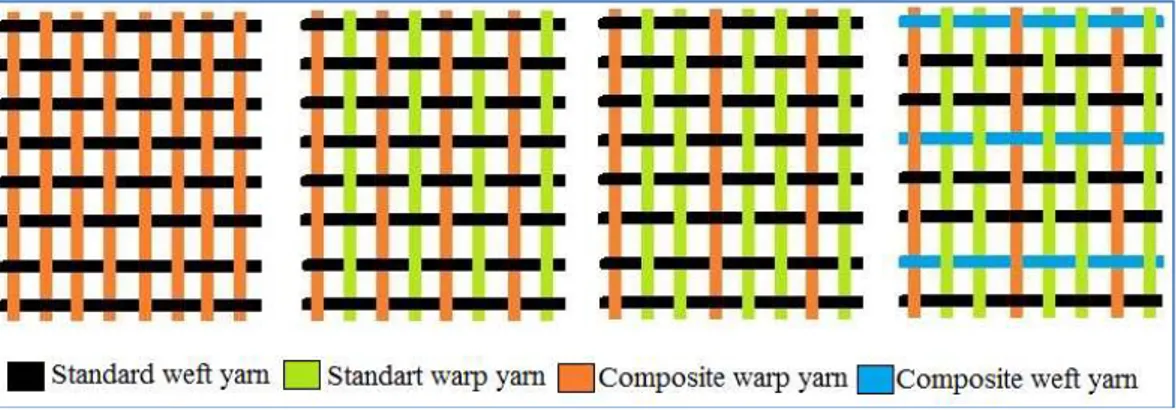The Fiber Society
2017 Spring Conference
May 17–19, 2017
Conference Chairs
Dr. Thomas Gries and Dr. Yves-Simon Gloy
Institut für Textiltechnik der RWTH Aachen, Germany
Tuesday, May 16
Location: Institute für Textiltechnik, RWTH Aachen University, Otto-Blumenthal-Str. 1
1:00 PM–5:00 PM Governing Council Meeting: Conference Room Nord/Süd
Afternoon Session
Plenary Speaker: Gunnar Seide, Aachen-Maastricht Institute for Biobased Materials (AMIBM), Biobased 2:10 Materials: Challenges of Applications and Process Development (Room A)
Room A Room B Room C
Session: Yarns and Fabrics: Processes, Structures, and Properties
Chair, Laurence Schacher
Session: Modeling and Simulation of Textiles and Processes
Chair, David Breen
Session: Composites Chair, Wilhelm Steinmann
2:10 Examining the Effects of Fiber Types and Fabric Tightness on Bursting Strength of Circular Knit Fabrics Produced from Vortex Yarns
Seval Uyan University
An Optimized Yarn Geometric Model for Knitted Material Simulation
David Breen, Drexel University
Enhanced Damping of Carbon Fiber-reinforced Composites by Novel Liquid-Core Fibers Rudolf Hufenus, Empa
2:35 An Investigation of Performance Properties of Warp Knitted Carpets
, Gaziantep University
Modeling Approaches for 3D Woven Composites: Potential and Limitations
Mohamed Saleh, University of Sheffield
A Novel Automated Method for Manufacturing New Semi-finished Photo Composites
Anwar Shanwan, Université de Haute-Alsace
3:00 Emissivity Characterization of Different Stainless Steel Textiles in the Infrared Range
Maria Cristina Larciprete, Sapienza Università di Roma
Internal Structure of the Bundle Manufactured by Friction Method Jung Ho Lim, Kyung Hee
University
Metal Composite Yarn Production with Commingling Technique and Properties of Textile Surfaces Obtained from These Yarns 3:25 How Nonwovens Avoid the
Shrink?
Amit Rawal, Indian Institute of Technology-Delhi
Effect of Staple Length on the Sliver Dynamics in Roller Drafting
You Huh, Kyunghee University
Strategies for Improving Durability of Vegetable Fiber-reinforced, Cement-based Composites
Mònica Ardanuy, Universitat Politècnica de Catalunya 3:50 Effects of the Laundering Process
on Dimensional Properties of Lacoste Fabrics Made from Modal/Combed Cotton-blended Yarns
Ebru Çoruh, Gaziantep University
Modeling of the Mechanical Properties of Cotton Fibers Wafa Mahjoub, Université de Haute-Alsace
Basalt Fiber as Technical Textile Material
Ertan Çukurova
4:15 Antibacterial Activity of Nonwoven Cleaning Materials Treated with Silver
Nanoparticles after Newly Developed Repeated Washing Process
Emel Çinçik, Erciyes University
open open
Reception: Alter Ballsaal, Kurhausstraße 1, Aachen (5 minute walk or bus station: Aachen, Bushof)
6:30 Banquet
Metal Composite Yarn Production with Commingling Technique and
Properties of Textile Surfaces Obtained from These Yarns
lkan Özkan, Duru Baykal
Çukurova University, Faculty of Engineering and Architecture, Textile Engineering, Turkey iozkan@cu.edu.tr
Intermingling is an alternative technique for yarn blending process. Yarns having different features can be combined by feeding the same intermingling jet. This process is defined as commingling. Intermingling machine’s unit and commingling process diagram are shown in Figure 1.
Figure 1. Intermingling machine’s unit and commingling process diagram
In this study, for the production of metal composite yarns, standard textured polyester yarns were commingled with different silver, copper, stainless steel metal wires and metalized (silver) polyamide filament. Then, woven fabrics were produced with 4 different placements of these composite yarns. Different fabric structures produced in this study can be seen from Figure 2.
Figure 2. Different fabric structures
Antibacterial-antifungal activity, surface resistivity and electromagnetic shielding effectiveness tests were applied to produced samples according to relevant standards. It has been identified that the carried application provides antibacterial-antifungal activity, antistatic and electromagnetic shielding properties to the samples.
